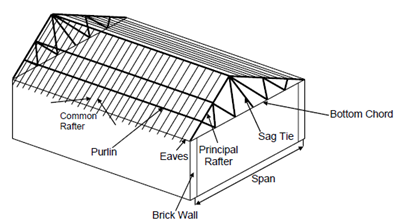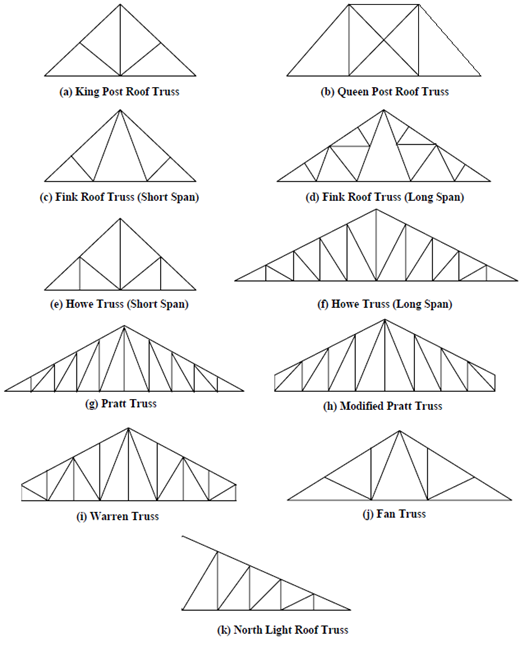Types of Roof Truss:
There are large varieties of roof trusses in use. Figure display some of the most common types of steel roof trusses.
The king-post (Figure (a)) and queen-post (Figure (b)) trusses are some of the oldest forms of roof trusses and were largely used for small span timber roof trusses construction. Fink (Figures (c) and (d)), and Howe (Figures (e) and (f)) trusses are quite suitable for steel construction, both for large and smaller spans.

Figure

Figure: Types of Roof Truss
The Pratt truss (Figures (g) and (h)), Warren truss (Figure (i)) and Fan truss (Figure (j)), are also quite common types of roof trusses. Figure (k) shows a north light roof truss (unsymmetrical), that is generally used for factories and workshops.
Normally the purlins are fixed at the node points or joints of the top sloping member of the truss. A node in roof trusses is assumed to be pinned joints for purposes of analysis. Therefore, the roof truss members are not subjected to any bending as the loads (through the purlins) are transmitted at the pinned joints. They are subjected only to axial loads, tensile or compressive. The roof trusses are normally supported at their ends on columns (steel or reinforced concrete) or masonry walls. A Steel base plates are used for transferring the loads from the truss to the support. A single of the base plates is fixed and the other is of sliding type, representing a fixed hinged support and a roller support respectively for statical calculations. You are required to go through it once again before proceeding.